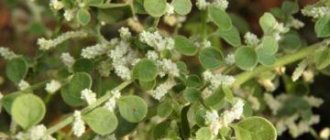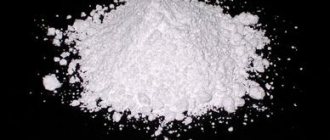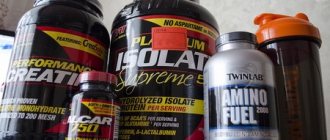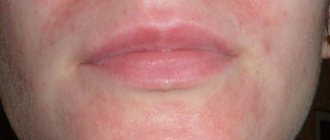Pharmacodynamics and pharmacokinetics
The product has an irritating effect on skin exteroreceptors and provokes local release of prostaglandins , kinins and histamine . In the spinal cord it functions as a liberator of enkephalins and endorphins , which block the flow of pain impulses from pathological foci.
When it enters the upper respiratory tract, it interacts with the endings of the trigeminal nerve and reflexively excites the respiratory center. A concentrated solution causes colliquation (softening and dissolution) of microbial cell proteins.
With any method of administration, it is quickly eliminated from the body (mainly by the bronchial glands and lungs). Reflexively affects the tone of the vascular walls and the activity of the heart.
At the site of application, when applied externally, it dilates blood vessels, improves tissue regeneration and trophism, and also stimulates the outflow of metabolites.
When the skin is irritated, it causes similar reflexes in segmentally located muscles and internal organs, helping to restore impaired functions and structures.
Suppresses the focus of excitation, which supports the pathological process, reduces muscle tension, hyperalgesia, relieves vascular spasm, thus providing a distracting effect.
With prolonged contact, it burns the mucous membranes and skin, which is accompanied by tissue hyperemia, the development of swelling and pain.
Oral administration in small concentrations stimulates the secretion of glands, affecting the vomiting center, reflexively increasing its excitability and causing vomiting.
The drug does not enter the bloodstream.
Precautionary measures
When using ammonia hydroxide in medicine or for the home, you must be careful and use personal protective equipment. In addition, you must follow the rules:
- if possible, applying the substance to plants should be done with a mask and rubber gloves;
- alcohol must not be mixed with other active substances;
- People suffering from vegetative-vascular dystonia should not use the drug;
- if the undiluted solution gets inside, you must immediately drink a lot of water, induce a gag reflex and seek help from a doctor;
- The drug should be stored in closed places;
- Avoid contact of ammonia hydroxide with facial skin;
- The composition should be diluted in the air or in a well-ventilated area.
Ammonia solution: instructions for use
The instructions for use of ammonia indicate that the dose of the drug is selected individually depending on the indications.
In surgical practice, the solution is used as a hand wash according to the Spasokukotsky-Kochergin method, diluting 50 ml of solution in 1 liter of boiled water (warm).
When used to induce breathing, the solution is applied to gauze or cotton wool. For insect bites, it is used as a lotion.
The use of ammonia in gardening
The use of ammonia for plants is quite diverse: it is used against aphids, for treating onions against onion flies, and for feeding plants.
Ammonia for aphids is used at the rate of 2 tbsp. spoons per 10 liters of water. You should also add a little washing powder to the bucket - this will ensure better adhesion. The solution is used to spray plants.
Ammonia as a fertilizer: in this case, take 50 ml of solution per 4 liters of water. The product is not only a good fertilizer for indoor and garden plants, but also allows you to get rid of midges and mosquitoes.
To water the onions, dilute 1-2 tbsp in a bucket of water. spoons of ammonia. It is recommended to water plants with this product from the moment of planting until the end of June.
How to clean gold?
There are several ways to clean gold with ammonia.
You can mix 1 teaspoon of alcohol with a glass of water and 1 tbsp. spoon of any detergent, or you can add to water (200 ml), ammonia (1 teaspoon), hydrogen peroxide (30 ml), half a teaspoon of liquid detergent.
In the first case, the jewelry is placed in the cleaning solution for an hour or two, in the second - for 15 minutes. After cleaning, the gold should be rinsed in water and wiped dry with a napkin.
How to clean silver?
To clean silver, ammonia is diluted with water in a ratio of 1:10 (1 part alcohol to 10 parts water). Silver items are left in the solution for several hours, then rinsed in water and wiped with a soft cloth.
To regularly clean silver, use a soap solution to which a small amount of ammonia is added.
Ammonia for cockroaches and ants
To combat ants, 100 ml of solution is diluted in a liter of water and the furniture in the kitchen is washed with this product. To get rid of cockroaches, wash the floor with ammonia.
Ammonia for heels
As a means to soften rough skin on the feet, ammonia is mixed with glycerin (1:1). The product is applied to the feet before going to bed, and socks are put on top.
Rules of application
Ammonia solution is a toxic substance, therefore, if used incorrectly, a reflexive cessation of breathing and a stomach burn may occur (when taking the undiluted drug). As a rule, the drug is used inhalation, topically and orally. In surgical practice they wash their hands. With prolonged exposure to the drug on the body, necrobiotic and inflammatory changes in tissues may occur.
Before using the substance, you should carefully read the instructions or consult a specialist. If the container with the drug is accidentally damaged, you should quickly open the window and ventilate the room. In case of contact with mucous membranes and eyes, rinse the affected areas with plenty of running water and seek medical help.
Ammonia for acne
Ammonia solution is an excellent remedy for oily facial skin, which is prone to acne and blackheads. It can be used for washing. In this case, you need to dilute half a teaspoon of the substance with a glass of warm water. In addition, problem areas can be wiped with ammonia hydroxide solution with a concentration of 1-2% using a cotton swab.
Overdose. Impact of ammonia vapor on the human body
An overdose causes increased manifestations of adverse reactions. Thus, the effect on the human body of a high dose of ammonia solution when taken orally is manifested:
- vomiting with a characteristic odor of ammonia;
- diarrhea with tenesmus (false painful urge to defecate);
- swelling of the larynx;
- runny nose;
- cough;
- excitement;
- convulsions;
- collapse.
In some cases, death (the patient dies when taking 10-15 g of ammonium hydroxide ).
Treatment for overdose is symptomatic.
Sometimes people wonder what will happen if they drink ammonia. You should be aware that oral administration of the solution in its pure form can cause severe burns of the digestive canal.
Symptoms of ammonia poisoning
Human exposure to ammonia when inhaling its vapors manifests itself in the form of irritation of the mucous membranes of the eyes and respiratory tract. In this case, the intensity of irritation depends on the gas concentration.
Signs of ammonia vapor poisoning:
- profuse lacrimation;
- salivation;
- increased breathing;
- increased sweating;
- facial hyperemia;
- feeling of heaviness and tightness in the chest;
- chest pain;
- whooping cough;
- sneezing;
- runny nose;
- swelling of the larynx and spasm in the vocal cords;
- anxiety;
- suffocation;
- convulsions;
- loss of consciousness.
With prolonged exposure, ammonia vapor provokes severe muscle weakness, a person's blood circulation is impaired, symptoms indicating respiratory distress, as well as pain, severe burning and swelling of the skin occur.
Regularly repeated exposure to ammonia leads to systemic disorders, which are manifested by eating disorders , deafness , catarrh of the upper respiratory tract , heart failure , and death .
To protect against the harmful effects of ammonia, rinse your face and skin unprotected by clothing generously with water and cover your face with a respirator (gauze bandage or gas mask) as soon as possible. It is good if the respirator or bandage used is soaked in water with citric acid (2 teaspoons per glass of water).
You should be aware that liquid ammonia causes severe burns. For this reason, it is transported in yellow-painted steel cylinders, special tankers, road and rail tanks.
What to do if there is an ammonia release?
If you receive information about an ammonia leak, you should protect your skin and respiratory organs and leave the emergency area in the direction indicated in the radio or television message.
From the chemical damage zone you need to go in a direction perpendicular to the direction of the wind.
In case of fire, it is prohibited to approach the source of fire. Ammonia containers should be cooled from as far away as possible. To extinguish, use air-mechanical foam or sprayed water.
If there is no way to leave, you should urgently seal the room. Having got out of the danger zone, take off outer clothing (leave things outside), take a shower, rinse the nasopharynx and eyes with water.
In case of an accident, you should take shelter in the lower floors of the building.
First aid for poisoning
In case of poisoning, the victim should be taken out of the affected area. In cases where this is not possible, provide access to oxygen.
The mouth, throat and nasal cavity are washed with water for 15 minutes, the eyes are instilled with a 0.5% solution of Dicaine and, if necessary, additionally covered with a bandage. To make rinsing more effective, you can add glutamic or citric acid to the water.
Even with a slight degree of poisoning, the patient should be provided with absolute rest over the next 24 hours.
If the substance gets into an open area of the body, it is washed abundantly with water and covered with a bandage.
If ammonia enters the digestive canal, it is necessary to rinse the stomach.
Poisoning of any degree requires contacting a medical facility and, if the doctor deems it necessary, subsequent hospitalization.
After completing the course of treatment, the patient may retain certain neurological disorders, for example, loss of memory of individual events and facts, tics with various clinical manifestations, decreased hearing and pain sensitivity threshold. A common outcome is clouding of the lens and cornea of the eye.
Ammonia: ways of neutralization in the body
The main route of binding of the substance is the biosynthesis of urea, which occurs in the ornithine cycle in liver cells. As a result of this synthesis, urea - a substance that is not harmful to the body.
Ammonia is also transported in the blood in the form of glutamine , which is a non-toxic neutral compound and easily passes through cell membranes.
Another transport form of it is alanine .
Overdose and features of side symptoms
When inhaling ammonia, signs of reflex respiratory arrest may develop. Inhalation of ammonia should be done with caution, since it is not difficult to bring a person to his senses, but treating chemical burns of the respiratory system, or trying to bring him back to life when breathing stops, is very problematic.
It is important to know! The product should be stored exclusively in secluded places where access to children is strictly prohibited.
When using ammonia externally, the following side effects may occur:
- swelling;
- soreness of the skin;
- hyperemia;
- skin redness;
- hives;
- temperature increase;
- allergic reactions.
If signs of overdose appear and side symptoms develop, you must immediately call an ambulance. This will save a person’s life, since ammonia solution, even with a slight overdose, is a deadly substance.
special instructions
What is ammonia? Characteristics, physical and chemical properties of ammonia
Ammonia or hydrogen nitride (NH3) is a colorless gas (like hydrogen, ether, oxygen). The substance has a sharp irritating odor and releases into the atmosphere producing smoke. The name of the substance in Latin is Ammonium.
Molar mass - 17.0306 g/mol. MPC r.z. is 20 mg/m3. Taking into account this parameter, ammonia is classified as a low-hazard substance (hazard class IV).
NH3 is extremely soluble in water: at 0°C, about 1.2 thousand volumes of this substance dissolve in one volume of water, and at a temperature of 20°C - about 700 volumes.
It has the properties of alkalis and bases.
Used as a refrigerant for refrigeration equipment. It is marked R717, where R stands for “refrigerant” (Refrigerant), “7” indicates the type of refrigerant (in this particular case, that ammonia is not an organic substance), the last 2 digits are the molecular weight of the substance used.
In liquid hydrogen nitride, the molecules form hydrogen bonds. The dielectric constant, conductivity, viscosity and density of liquid NH3 are lower than that of water (the substance is 7 times less viscous than water), the boiling point of the substance is bp -33.35°C, it begins to melt at a temperature of -77.70°C
Like water, liquid NH3 is a highly associated substance due to the formation of hydrogen bonds.
The substance practically does not transmit electric current and dissolves many organic and inorganic compounds.
In solid form, NH3 appears as colorless crystals with a cubic lattice.
The decomposition of hydrogen nitride into nitrogen and hydrogen becomes noticeable at temperatures exceeding 1200-1300°C, in the presence of catalysts - at temperatures above 400°C.
Ammonia does not burn in air, but under other conditions, namely in pure oxygen, it ignites and burns with a yellow-green flame. When a substance burns in excess oxygen, nitrogen and water vapor are formed.
The combustion reaction of ammonia is described by the following equation: 4NH3 + 3O2= 2N2 + 6H2O.
Catalytic oxidation of NH3 at a temperature of 750-800°C allows one to obtain nitric acid (the method is used for the industrial production of HNO3).
Process stages:
- catalytic oxidation with oxygen to NO;
- conversion of NO to NO2;
- absorption of a mixture of NO2 and O2 by water (dissolution of nitric oxide in water and production of acid);
- purification of gases released into the atmosphere from nitrogen oxides.
The reaction of ammonia with water produces ammonia hydrate (ammonia water or caustic ammonia). The chemical formula of the hydrate is NH3·H2O.
How is caustic ammonia produced in industry? In industry, the synthesis of an ammonia solution with a concentration of 25% is carried out by saturating water with ammonia, which is formed as a result of coking coal in a coke oven, or with synthetic ammonia gas.
What is ammonia water used for? Nitrogen fertilizers, soda, and dyes are obtained from aqueous solutions of ammonia.
Ammonia: obtained from nitric acid in the laboratory
To obtain NH3 from HNO3, place the test tube in a stand in an almost horizontal position, but so that the acid does not flow out of it.
A few drops of HNO3 are poured into the bottom of the test tube and several pieces of zinc or iron filings are placed into it using tweezers. Reduced iron should be placed at the opening of the test tube (so that it does not come into contact with nitric acid).
The test tube must be closed with a stopper with a drain tube and slightly heated. Heating will increase the rate of ammonia release.
What does ammonia react with?
Ammonia reacts with organic substances. The products of the reaction of ammonia with α-chloro-substituted carboxylic acids are artificial amino acids.
As a result of the reaction, hydrogen chloride (HCl gas) is released, which, when combined with excess ammonia, forms ammonium chloride (or ammonia NH4Cl).
A large number of complex compounds contain ammonia as a ligand.
Ammonium salts are colorless solids with a crystalline lattice. Almost all of them are soluble in water, and they have the same properties as the metal salts known to us.
The product of their interaction with alkalis is ammonia:
NH4Cl + KOH = KCl + NH3 + H2O
The reaction described by the formula, if indicator paper is additionally used, is a qualitative reaction to ammonium salts. The latter interact with acids and other salts.
Some ammonium salts evaporate (sublimate) when heated, while others decompose.
NH3 is a weak base, so the salts it forms in an aqueous solution undergo hydrolysis.
Weaker bases than ammonia are aromatic amines - NH3 derivatives in which hydrogen atoms are replaced by hydrocarbon radicals.
Reactions of ammonia with acids
Adding concentrated hydrochloric acid to an NH3 solution is accompanied by the formation of white smoke and the release of ammonium chloride NH4Cl (ammonia).
The reaction of sulfuric acid and ammonia produces white crystals of (NH4)2SO4 - ammonium sulfate.
If you add nitric acid to NH3, white ammonium nitrate NH4 NO3 is formed.
When chloroacetic acid reacts with NH3, the chlorine atom is replaced by an amino group, resulting in the formation of aminoacetic acid.
If NH3 is passed through hydrobromic acid, ammonium bromide is formed (the reaction is described by the formula - HBr + NH3 = NH4Br).
Ammonia: heavier or lighter than air?
Compared to air, NH3 has almost half the density, so its vapor always rises. However, under certain conditions, an ammonia aerosol can form - a suspension of droplets of this substance in a gas. This aerosol is usually heavier than air and is therefore more dangerous than NH3 gas.
Is hydrogen nitride a complex or simple substance?
Hydrogen nitride is formed by atoms of different elements, therefore it is a complex inorganic compound.
Molecular structure of ammonia
Ammonia is characterized by a crystal lattice of polar molecules, between which so-called Van Der Waals forces . There are 3 chemical bonds in the hydrogen nitride molecule; they are formed according to a covalent polar mechanism.
The molecule has the shape of a trigonal pyramid, at the top of which there is a nitrogen atom (the oxidation state of nitrogen in NH3 is “-3”).
Industrial method for producing ammonia
Producing ammonia in industry is an expensive and labor-intensive process. Industrial synthesis is based on the production of NH3 from nitrogen and hydrogen under pressure, in the presence of a catalyst and at high temperatures.
Sponge iron activated by aluminum and potassium oxides is used as a catalyst in the production of NH3 in industry. Industrial installations in which synthesis is carried out are based on the circulation of gases.
The reacted gas mixture, which contains NH3, is cooled, after which the NH3 condenses and is separated, and the hydrogen and nitrogen that have not reacted with a new portion of gases are again supplied to the catalyst.
There was also a presentation on the topic of co-production of ammonia and methanol in industry.
Current GOSTs, in accordance with which hydrogen nitride is produced:
- technical liquid ammonia, anhydrous ammonia - GOST 6221-90;
- aqueous ammonia - GOST 3760-79;
- technical ammonia aqueous - GOST 9-92.
The ammonia synthesis reaction can be characterized as follows: ammonia is formed as a product of a compound reaction occurring in the gas phase - direct, catalytic, exothermic, reversible, redox.
Disposal of the substance
NH3 is recycled by selectively obtaining substances that are valuable for recycling, and by a method that provides for the possibility of using waste waste as raw material for the production of other materials.
What is ammonia? Chemical formula of ammonia
Ammonia is a 10% aqueous solution of ammonia. The formula of the substance is NH4OH. The name in Latin is Solutio Ammonii caustici seu Ammonium causticum solutum.
Ammonia has found use in everyday life as a stain remover, a means for cleaning coins, dishes, plumbing fixtures, furniture, and jewelry made of silver and gold. In addition, it is used for dyeing fabrics, fighting aphids, onion moths, onion flies, ants and cockroaches, washing windows, and caring for rough skin on the feet.
The reaction of ammonia with iodine produces a very unstable adduct, which has the appearance of dry crystals, which is often used as a spectacular experiment.
Is ammonia ammonia?
Some people believe that ammonia and ammonia are the same thing. However, this opinion is wrong. Ammonia solution is ammonia or, in other words, an aqueous solution of ammonium hydroxide.
And ammonia is an ammonium salt, a slightly hygroscopic, white and odorless crystalline powder that, when heated, evaporates hydrogen nitride (ammonia). Its formula is NH4Cl.
Wikipedia indicates that the substance is used as a fertilizer (as a top dressing applied to alkaline and neutral soils under crops that react poorly to excess chlorine - rice, corn, sugar beets), as a food additive E510, flux for soldering, electrolyte components in galvanic cells and a quick fixer in photography, a smoke generator.
In laboratory conditions, ammonia is used to lyse red blood cells ; its use in medicine is advisable to enhance the effect of diuretics and relieve edema of cardiac origin.
Precautionary measures
Topical application is possible only on intact skin.
In case of accidental contact of the product with the mucous membrane of the eyes, wash the eyes with plenty of water (for at least 15 minutes) or a solution of boric acid (3%). Oils and ointments are contraindicated in this case.
If you take an ammonia solution orally, you should drink fruit juices, water, warm milk with soda or mineral water, a solution of citric (0.5%) or acetic (1%) acid until it is completely neutralized.
In case of damage to the respiratory system, fresh air and warm water inhalations with the addition of citric acid or vinegar are indicated; in case of suffocation - oxygen.
What do the smell of ammonia in urine and the ammonia smell of sweat indicate?
There are a number of reasons that could explain why your urine smells like ammonia.
As a rule, an unpleasant odor after urination is a temporary phenomenon that can be caused by:
- abuse of protein foods;
- dehydration;
- urinary retention;
- consumption of spicy seasonings.
However, urine with an odor can also signal a serious pathology:
- diabetes mellitus;
- inflammatory ( cystitis , pyelitis , urethritis ) and infectious ( gardnerellosis , chlamydia , vaginosis ) diseases of the urogenital tract;
- tuberculosis;
- renal dysfunction;
- metabolic disorders;
- malignant neoplasms.
You should know that the smell of ammonia from the mouth also indicates kidney failure
In women, discharge with an odor is possible during menopause and pregnancy (if the pregnant woman drinks little fluid and/or takes various medications and supplements).
If your sweat smells like ammonia, the cause may be kidney failure , cystitis , urinary incontinence, liver problems, cholera , or the presence of bacteria that can cause peptic ulcers. Another possible cause of body odor is following a protein diet.
Everyone knows what ammonia smells like, so if a characteristic odor appears (especially if a child’s urine smells) or an ammonia taste in the mouth, you should consult a doctor, who will accurately determine the cause of this phenomenon and take the necessary measures.
An equally alarming symptom is the smell of ammonia in the nose, which can be caused by certain diseases of the nasopharynx, pathologies of other organs, foreign bodies entering the nasal passage, head injuries (the smell may refer to olfactory hallucinations), and cancer.
Why does fish smell like ammonia?
Sometimes it happens that fish smells like ammonia. The smell can occur in 2 cases:
- if the fish was stored incorrectly and pockets of a certain type of mold appeared on it;
- if the fish lived in a polluted pond.
During pregnancy
During pregnancy and lactation, use is allowed only in situations where the benefit to the woman’s body outweighs the potential risk to the child.
In most cases, pregnant women try not to use ammonia in any form. Maternity dye should also not contain this substance. The list of products most suitable for pregnant women includes the following ammonia-free hair dyes:
- Igora Schwarzkopf (Schwarzkopf Igora Vibrance);
- paints from the Garnier palette (Garnier Color&Shine);
- Estelle paint, the palette of which includes 140 shades;
- ammonia-free paint from the Matrix Color Sync palette;
- Kutrin paint.
There are also many good reviews about L'Oreal ammonia-free paint (L'Oreal Professionnel LUO COLOR). However, there are women who continue to use ammonia hair dye during pregnancy.
Reviews
Ammonia is a remedy that has been proven over the years. Traditionally, it is used as a means to bring a person out of unconsciousness. However, there are also reviews of ammonia for hangovers.
When intoxicated, pour 5 to 10 drops of ammonia solution into a glass of water. After a drunkard drinks water, he should quickly rub his ears with his hands so that as a result of a rush of blood to his head, he will regain consciousness.
When preparing the medicine, it is important to strictly adhere to the dosage so as not to cause a burn to the esophagus. Knowledgeable people claim that this is a very effective way to get a person out of binge drinking.
Formula
Many people mistakenly believe that ammonia, ammonia, ammonia, and hydrogen peroxide are similar substances, but this is not so. Some of the drugs may have the same smell, although the chemical formula and method of preparation are different. The alcohol in question, unlike ammonia gas, is a colorless liquid with a pungent odor. This substance has the formula: NH4OH. It is rare to find another one like this - NH3∙H2O. This notation is used for a 10% solution.
Price of ammonia. Where to buy ammonia?
Ammonia is marketed under the name Ammonia solution 10%. The price of ammonia in Ukrainian pharmacies is from 2 UAH. In Russian pharmacies its price ranges from 13 to 39 rubles.
Where to buy liquid technical ammonia? You can purchase ammonia water from factories or through the official websites of manufacturers of chemical raw materials. The price of ammonia is from 8 thousand UAH per 1 ton. In Russia, the price of aqueous ammonia starts at 11.5 rubles per 1 kg.
- Online pharmacies in RussiaRussia
Composition of the drug
Ammonia is a clear and colorless liquid that has a pungent and characteristic odor. The drug is produced in ampoules, vials, jars, as well as dropper bottles. Other forms of packaging are also possible, which depends, first of all, on what the product is intended for.
What is included in the ammonia solution? 1 liter of ammonia contains the following substances:
- The main active ingredient, presented in the form of aqueous ammonia in an amount of 0.44 liters;
- Auxiliary components in the form of purified water with a volume of 1000 ml.
It is important to know! Using the drug without a doctor’s prescription is not only strictly contraindicated, but also deadly.











